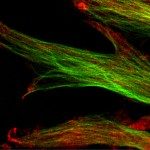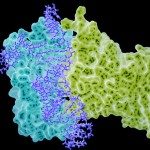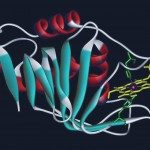Link to Pubmed [PMID] – 38063437
Link to DOI – 10.1128/mbio.01423-23
mBio 2023 Dec; (): e0142323
Type IV pili and type II secretion systems are members of the widespread type IV filament (T4F) superfamily of nanomachines that assemble dynamic and versatile surface fibers in archaea and bacteria. The assembly and retraction of T4 filaments with diverse surface properties and functions require the plasma membrane platform proteins of the GspF/PilC superfamily. Generally considered dimeric, platform proteins are thought to function as passive transmitters of the mechanical energy generated by the ATPase motor, to somehow promote insertion of pilin subunits into the nascent pilus fibers. Here, we generate and experimentally validate structural predictions that support the trimeric state of a platform protein PulF from a type II secretion system. The PulF trimers form selective proton or sodium channels which might energize pilus assembly using the membrane potential. The conservation of the channel sequence and structural features implies a common mechanism for all T4F assembly systems. We propose a model of the oligomeric PulF-PulE ATPase complex that provides an essential framework to investigate and understand the pilus assembly mechanism.






